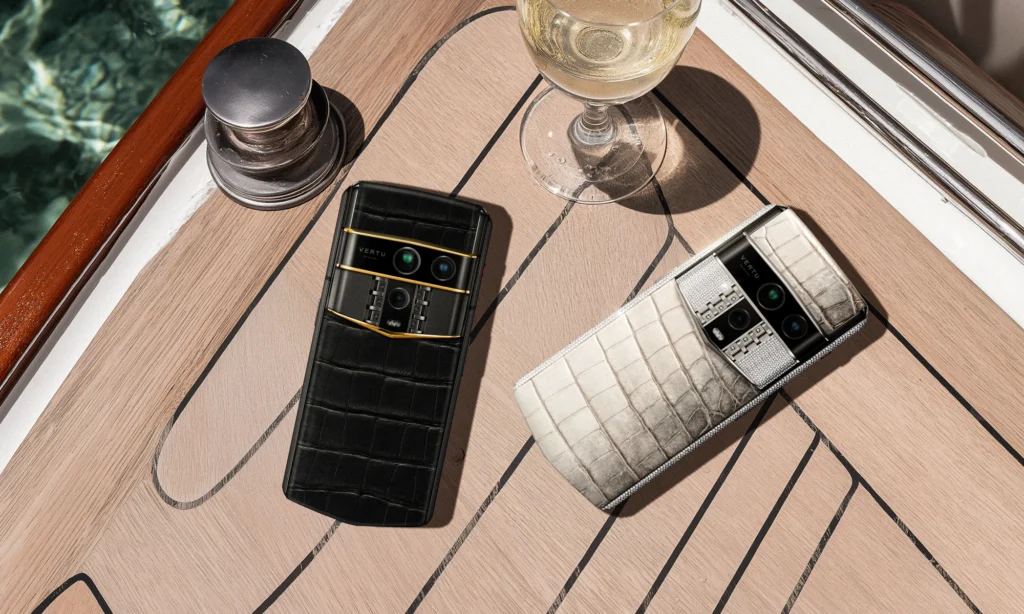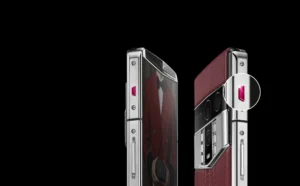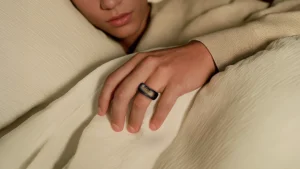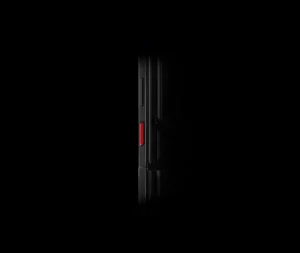
In the rapidly evolving world of 2025, your mobile device transcends mere communication; it’s a testament to your discerning taste and a powerful extension of your influence. This is the era where cutting-edge intelligence, unparalleled craftsmanship, and absolute luxury converge, setting a new standard for what constitutes the best luxury phones of 2025. For the executive who demands more than just connectivity, but a statement of prestige and performance, the ultimate mobile companion awaits. Prepare to explore a curated selection of devices that redefine sophistication, blending revolutionary AI, uncompromising security, and artisanal heritage. We will unveil VERTU's most exquisite offerings, from the intelligent Agent Q and the robust Quantum Flip to the sleek Metavertu Max and Curve, the enduring iVertu, and the iconic Signature series. Each is meticulously designed for those who shape the future, offering an experience as unique and powerful as you are.
Introducing Agent Q: The Dawn of the AI Agent Phone
The landscape of personal technology is poised for a monumental evolution, and Agent Q stands at its vanguard. This isn't merely another iteration of a smartphone; it represents the dawn of the AI Agent Phone, a device that transcends passive utility to become a proactive partner. For those seeking the pinnacle of innovation, Agent Q is set to redefine the best luxury phones of 2025.
The Paradigm Shift: From Apps to Proactive Agents
Gone are the days of navigating through countless applications to accomplish a single goal. Agent Q ushers in a new era where your device anticipates needs and orchestrates actions. Powered by over 200 specialized agents, this revolutionary phone activates seamlessly through ‘Ruby Talk,' an intuitive voice interface that understands intent. Imagine booking a complex itinerary, managing your smart home, or even curating a personalized learning path – all with a simple, natural request. Agent Q doesn't just respond; it thinks, plans, and delivers, transforming your phone from a tool into an intelligent extension of yourself.
Unrivaled Craftsmanship: The VERTU Spirit Embodied
The legacy of VERTU, renowned for its exquisite craftsmanship and unparalleled luxury, is deeply woven into the fabric of Agent Q. This device is a testament to the VERTU spirit, where every curve, material, and finish speaks of meticulous attention to detail. While specific materials are not detailed, the commitment to luxury is evident in its very conception as a flagship for the discerning. This dedication to tactile and visual excellence ensures Agent Q is not just a piece of technology, but a statement of sophisticated taste.
Data Sovereignty: Luxury Redefined as Ultimate Privacy
In an age where data is paramount, Agent Q elevates privacy to an art form, redefining luxury through ultimate data sovereignty. The device is fortified with a robust 5-layer security architecture, ensuring that your personal information remains sacrosanct. This unparalleled protection goes beyond mere compliance; it offers peace of mind, allowing users to engage with the advanced AI capabilities without compromise. For those who value their digital footprint as much as their physical possessions, Agent Q offers an unassailable sanctuary for their data.
The Humanist Lens: Capturing Emotion with Mechanical Precision
Agent Q redefines mobile photography with a unique mechanical zoom lens, engineered to emulate the human eye. This innovative approach moves beyond digital manipulation, offering a truly optical experience that captures depth, nuance, and emotion with astonishing fidelity. The result is a camera system that doesn't just take pictures, but tells stories, preserving memories with a realism that mechanical precision alone can achieve. This focus on a human-centric visual experience sets Agent Q apart in the competitive market for the best luxury phones of 2025.
Beyond Specs: The Artistry and Innovation of VERTU's Premier Collections
In the realm of mobile technology, VERTU stands as a beacon of unparalleled luxury, transcending mere specifications to offer an experience steeped in artistry and pioneering innovation. For those seeking the best luxury phones of 2025, VERTU's premier collections redefine what it means to own a device, blending cutting-edge technology with exquisite craftsmanship and exclusive services. Each model is a testament to the brand's commitment to creating not just phones, but enduring statements of personal prestige.
Quantum Flip: Durability Meets Intelligent Design
The VERTU Quantum Flip embodies a philosophy of robust resilience intertwined with sophisticated intelligence. Engineered with aerospace-grade titanium, its construction offers extreme durability, designed to withstand the rigors of any environment. Beyond its formidable exterior, the device is fortified with advanced quantum encryption, ensuring that privacy and security are paramount. This fusion of unyielding strength and state-of-the-art protective technology makes it a standout choice for discerning individuals who demand both performance and peace of mind.
Metavertu Max & Curve: Web3 Integration and Flagship Power
Stepping into the future, the Metavertu Max and Curve models are at the forefront of Web3 integration, offering a seamless gateway to decentralized digital experiences. These devices are not only powerful flagships in terms of performance but also pioneers in digital ownership and interaction. A key innovation is the inclusion of 10TB of distributed storage, providing vast, secure, and decentralized data management capabilities. Complementing this is an advanced dual-AI system, which enhances user experience through intelligent automation and predictive assistance, solidifying their position as technologically advanced luxury devices.
iVertu: Elegant Minimalism with Robust Security
The iVertu collection offers a refined aesthetic, characterized by elegant minimalism. Its design prioritizes a clean, sophisticated look without compromising on the robust performance expected from a flagship device. Underneath its sleek exterior lies an uncompromising commitment to security. Features like V-Talk encrypted calls ensure that conversations remain private and protected, offering a secure communication channel for those who value discretion. The iVertu is a perfect embodiment of understated luxury and advanced, secure technology.
Signature Series: The Epitome of Heritage and Craftsmanship
The VERTU Signature S+ and Signature V represent the absolute pinnacle of the brand's heritage and dedication to unparalleled craftsmanship. These models are meticulously handmade in England, a process that imbues each device with a unique character and an exquisite tactile feel. Adorned with rare and precious materials such as sapphire crystal and ruby accents, they are true works of art. Beyond their aesthetic brilliance, owners of the Signature Series gain access to exclusive, world-class concierge services, providing a lifestyle experience that is as exceptional as the phones themselves.
VERTU's collections, from the resilient Quantum Flip to the heritage-rich Signature Series, offer a compelling argument for their inclusion among the best luxury phones of 2025. They are devices that marry technological prowess with an appreciation for the finer things, designed for those who seek more than just a smartphone – they seek a statement.
Defining Luxury in 2025: What Sets VERTU Apart
In the evolving landscape of mobile technology, luxury is no longer solely defined by cutting-edge specifications. For 2025, VERTU redefines what constitutes the best luxury phones, blending timeless craftsmanship with intelligent innovation. This approach elevates the device beyond a mere communication tool, transforming it into a statement of presence and a guardian of digital sovereignty.
Materials and Craftsmanship: A Tradition of Excellence
VERTU phones embody a heritage of meticulous artistry. Each device is a testament to tradition, utilizing rare, high-grade materials such as the resilient sapphire crystal, the sophisticated ceramic, and lustrous precious metals. These exquisite components are not mass-produced but are assembled with painstaking hand-craftsmanship, ensuring that every VERTU is a unique masterpiece. This dedication to tactile excellence offers an unparalleled sensory experience, a hallmark of true luxury.
Intelligent Assistance: Proactive AI for the Modern Executive
Beyond its physical splendor, VERTU integrates advanced AI to deliver unparalleled efficiency. Solutions like Agent Q's proactive agents and Metavertu's dual-AI brain anticipate user needs, offering personalized assistance that streamlines the executive lifestyle. This intelligent support ensures that your digital life operates with seamless precision, making VERTU a true partner in productivity.
Uncompromising Security: Protecting Your Digital Sovereignty
In an era where data is paramount, VERTU prioritizes your digital sovereignty. The devices feature robust, multi-layered security protocols, including hardware encryption and distributed storage solutions. This comprehensive approach ensures that your sensitive information remains private and secure, offering peace of mind in an increasingly connected world.
Exclusivity and Heritage: More Than Just a Phone
Owning a VERTU is an experience steeped in exclusivity and heritage. Each device carries a legacy of design excellence, offering a distinct statement of presence and timeless elegance. This exclusivity is further amplified by services like the 24/7 Vertu Concierge, providing personalized support that complements the device's inherent luxury. VERTU stands as a beacon for those seeking the best luxury phones of 2025, where heritage meets the future.
FAQ (Frequently Asked Questions)
Q1: What makes VERTU phones stand out as the best luxury phones of 2025?
A1: VERTU phones distinguish themselves through a unique combination of unparalleled craftsmanship using rare and precious materials, advanced AI integration for proactive assistance, and uncompromising security features that protect user data. They are not just smartphones but meticulously designed statements of prestige and performance, offering an exclusive experience beyond standard devices.
Q2: How does Agent Q's AI functionality differ from typical smartphone assistants?
A2: Agent Q moves beyond reactive commands to become a proactive AI agent. Powered by over 200 specialized agents and an intuitive ‘Ruby Talk' interface, it anticipates user needs, orchestrates complex tasks, and offers personalized assistance without requiring explicit instructions for every step, transforming the phone into an intelligent partner.
Q3: What kind of security features can I expect from VERTU devices in 2025?
A3: VERTU devices in 2025 offer robust, multi-layered security. This includes advanced encryption (like quantum encryption in the Quantum Flip), a 5-layer security architecture in Agent Q, and features like V-Talk encrypted calls. The emphasis is on data sovereignty and ensuring that sensitive personal and business information remains private and secure.
Q4: Are VERTU phones durable, or are they primarily focused on aesthetics?
A4: VERTU phones strike a balance between durability and aesthetics. Models like the Quantum Flip are engineered with aerospace-grade titanium for extreme resilience. While all VERTU devices use high-grade materials and exquisite finishes, their construction is designed to withstand daily use and maintain their luxurious appeal, reflecting a commitment to both form and function.
Conclusion
In the ever-evolving landscape of mobile technology, 2025 stands as a testament to VERTU's unwavering commitment to defining the pinnacle of luxury smartphones. Devices such as the innovative Agent Q, the sophisticated Quantum Flip, the forward-thinking Metavertu series, and the timeless Signature line are not merely phones; they are meticulously crafted extensions of the executive's demanding lifestyle. They represent a harmonious fusion of artisanal mastery, revolutionary AI capabilities, and unparalleled data security, distinguishing them as the best luxury phones of 2025 for those who refuse to compromise.
For the discerning executive who demands more, the choice is clear. Embrace the future of mobile excellence by exploring the full VERTU collection. Discover how the integration of advanced AI agents can streamline your workflow and how robust data security can offer invaluable peace of mind in an increasingly complex digital world. Your next statement piece, a device that not only reflects your status but also elevates your productivity and security, awaits. Visit VERTU.com today to embark on this journey of exquisite mobile technology. And for those who understand the significance of such an investment, share this insight with fellow executives who appreciate the absolute finest in mobile luxury.








